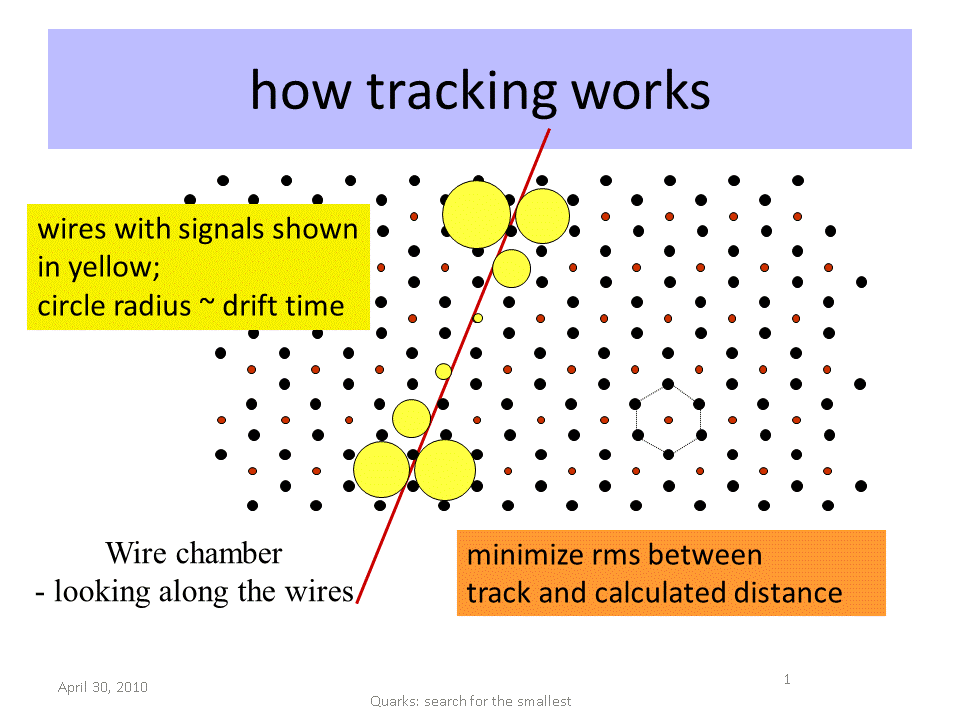

DC System Overview
A ``wire chamber'' is a particular kind of particle detector. It is a large box constructed with small-diameter fine wires crossing
from one side to the other, and filled with a special gas; in our case a mixture of Argon and Carbon Dioxide. The wires are run at
high voltage with some at positive voltage and some at negative. To understand how they work, think of seeing a jet flying overhead.
A high-flying jet may be invisible but the condensed vapor trail, the "contrail", is easy to see; this is the {\bf track} of the jet.
A charged particle is too small to directly see, but when it passes close to gas atoms it can knock electrons free from the atom; leaving
behind a trail of electrons. These electrons have negative charge so they are attracted to the wires which are at positive high voltage.
When they arrive at the wire, they create an electronic signal which is amplified and recorded by a computer.
By seeing which wires had electronic signals, we can determine the track of the particle. The tracking is more accurate if we also measure
the time of the signals; then we can estimate how far from the wire the particle passed.


Last modified: April 30, 2013
Daniel S. Carman


![]()
